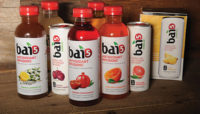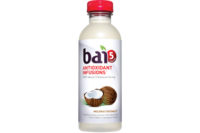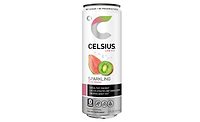Usually when people think about a disruption, it comes with a negative connotation: the neighbors upstairs who sounds like they have a personal bowling alley, the fire alarm testing in the middle of the workday, or the road construction that takes a major roadway down to one lane. However, in the consumer packaged goods (CPG) space, a disruption can be the catalyst that creates the next iconic brand for a generation.
For Princeton, N.J., based Bai Brands, disruption is part of its DNA. “We innovate to disrupt,” says Ben Weiss, chief executive officer and founder of Bai Brands. “We believe being disruptive in a mature industry like beverages is critical to creating a competitive advantage.”
Bai has been disrupting the marketplace since August 2009 when it launched its Bai and Bai5 beverage lines. Since then, the company has seen its enhanced-water brand post strong year-over-year sales numbers, expanded its product lineups, and taken its distribution to a national level.
Delivering solutions
Emphasizing the widespread concerns related to obesity, diabetes and artificial ingredients, Weiss notes that the ideation behind Bai was to offer a healthy solution to these problems.
“For us, health and wellness is about delivering a truly flavorful experience but doing it in a very responsible way with ingredients that are pure and not artificial, delivering antioxidants as a functionality, and doing without the use of calories and sugar,” he says. “I think we’re doing our part to address an epidemic. The industry overall is looking for that solution.”
With 5 calories in each serving, Bai5 features a sweetener blend of what Weiss calls “smart sweeteners,” namely organic stevia and erythritol, but also offers fresh fruit flavor that is infused with antioxidant-rich coffee fruit.
Coffee fruit, the fruit that grows on the coffee plant and contains the coffee bean, is an attribute that helps Bai5 deliver on its health and wellness promises. The all-natural ingredient had not been widely used in beverages until recently, and the coffee fruit that Bai uses is rich in antioxidants, Weiss notes.
Until recently, this fruit commonly was discarded during the coffee-farming process, he adds. Understanding the antioxidant power within the fruit, Bai saw an opportunity to harness this into an edible commodity.
“Personal health benefits are only part of the mission,” Weiss says. “Eliminating waste wherever possible is the duty of every person on this planet; as is helping your neighbors achieve a better life. When traditional — wasteful — coffee-harvesting methods are used, the discarded fruit ends up in waterways by the coffee plantation. Massive amounts of rotting coffee fruit pollute surrounding streams with a buildup of ochratoxins, aflatoxins and caffeine. By turning this composted material into a consumable product, Bai is keeping the waterways clean and the ecosystem in balance, generating a new revenue stream for local farmers, and blazing the trail for a healthier environment.”
In finding what Weiss calls its “holy grail” with Bai5, the company also made a strategic decision in 2012 when it discontinued production of its mid-calorie product, Bai. Although the mid-calorie product contained some of the company’s strongest-performing flavors, Weiss decided to discontinue the line in order to avoid consumer confusion. “It was really an intent to not confuse our consumer, and it was a belief that what we had at that time [in Bai5] was becoming a bigger part of our portfolio,” he says.
Even though it was a difficult decision to discontinue the mid-calorie offering, the company has not looked back and has posted approximately 300 percent growth each year dating back to 2011, Weiss says.
The Bai5 lineup now features 10 SKUs: Brasilia Blueberry, Malawi Mango, Ipanema Pomegranate, Molokai Coconut, Costa Rica Clementine, Tanzania Lemonade Tea, Sumatra Dragonfruit, Congo Pear, Panama Peach and Limu Lemon. Molokai Coconut and Brasilia Blueberry are the brand’s Top 2 performers, followed by Tanzania Lemonade Tea, which has a more limited distribution model than the other SKUs, Weiss notes. However, the top performers are not runaway leaders, as the difference between the 10 SKUs is in the single digits.
“When you have a portfolio of 10 drinks that has single-digit variance, that says something,” Weiss adds. “Our shopper shops across the lineup.”
Although Weiss believes Bai5 offers the perfect balance between low calories, full flavor and all-natural ingredients in the still beverage market, the company took those same principles and applied them to the sparkling beverage segment.
In late 2014, the company put an effervescent spin on its Bai5 beverages with its new Bai Bubbles line. Originally available in the New York City metropolitan area, Bai Bubbles blends antioxidants from coffee fruit with exotic fruit flavors and natural sweeteners and contains 5 calories and 1 gram of sugar in each 11.5-ounce can. With nationwide distribution planned for early 2015, the new lineup is set to consist of seven flavors — Bolivia Black Cherry, Peru Pineapple, Gimbi Pink Grapefruit, Waikiki Coconut, Jamaica Blood Orange, Indonesia Nashi Pear and Guatemala Guava — each of which pays homage to popular coffee-growing regions.
Weiss notes that the inspiration for launching Bai Bubbles stemmed from his time exploring the market and looking at what consumer need states needed addressing. “I spend a lot of time in the market, and I tend to think like a consumer,” he says. “I just saw a marketplace that was moving away from artificial ingredients, and I knew that we were addressing that market with Bai5, but I didn’t see that solution out there in carbonated.”
Adding that the company is filled with innovators and disruptors to the marketplace, Weiss explains that the idea-to-shelf process for Bai Bubbles took only three months. “When we focus on what we want to do, and it’s the right time to do it, we can get it done pretty quickly,” he says.
Although it still is too early to call out any variety leaders for the sparkling line, Weiss says because of its planned national launch through its distribution network and an agreement with national retailers including Target Corp., Minneapolis, the company is anticipating Bai Bubbles to be a $25 million business in its first year.
With 17 total SKUs between its two lines, Weiss adds that the company still is no stranger to flavor innovations. Although he can’t share any specifics, Weiss notes that the company always is developing new flavors and new innovations.
National news
The announcement of Bai Bubbles wasn’t the only big news Bai was able to share in 2014. The company also signed a distribution agreement with Plano, Texas-based Dr Pepper Snapple Group (DPS). The companies had previously worked together in the two years prior to the agreement, but the new agreement allowed Bai Brands to further capitalize on DPS’ direct-to-store and warehouse delivery capabilities on a national level. New retailers that were added following the agreement included Kroger, Target, Sam’s Club, Walmart, Publix, Stop & Shop, Duane Reade and Safeway, plus more than 100 additional Costco stores throughout the country.
“We have tested the Bai brand in select markets with great success over the last several quarters,” said Jeff Conrad, vice president of market development for DPS, in a statement at the time of its announcement. “There is no question that Bai fits exceedingly well with our portfolio of leading brands, and we expect this new choice to be very well received by consumers from coast to coast.”
Weiss notes that the deal signed with DPS was finalized in late January/early February of 2014, which resulted in Bai Brands missing out on the 2014 planning meetings. However, that aspect didn’t hamper the expanded relationship with the companies.
“We still had this amazing year of growth; still very disciplined,” Weiss says. “It was highlighted by our emerging relationship at the time with Target, which was the first national retailer to really go aggressive with the brand. They’re coming off a great year with Bai, and we started 2015 in a very aggressive way with them as well. But this is where we’re taking all of our learnings, we’re in true scale-up mode, and we’re going to build out our [all-commodity volume] (ACV) across all channels. It’s an exciting year for Bai.”
He adds that to be able to have full national distribution is every beverage company’s goal, and to have that by year five is a feat he is very proud of. “Not many brands can say that,” Weiss says. “I’m very proud of the pace at which we did that now that it’s up and running. DPS will cover close to 70 percent of the country, so there are still distributors that we have engaged to provide full national distribution.
“When you are looking to activate chains, you’re going to need to prove to that chain that you have the ability to get to every one of their stores,” he continues. “If you can’t do that, you’re not going to get much support from that chain. To be able to check that box and say, ‘Yes, we have a route to market [and] we can deliver to every one of your locations, whether you’re Sam’s Club, Costco, Target [or] whomever,’ is critical.”
Because DPS does not cover all regions across the United States, Bai also has agreements with many other distribution networks including Hensley Beverage Co. for Arizona, John Lenore & Co. for the San Diego market, Polar Beverages for the New England area, The Honickman Group in the mid-Atlantic, and Admiral Beverage Corp. for the mountain regions.
Through this expanded distribution network, Bai has learned that the key to reaching this success is all about winning at retail.
“It’s all about developing a relationship with a consumer that’s stronger than any other relationship,” Weiss says. “If you and your consumer are aligned, then everybody else will fall into place, whether it is the retailer and ultimately the distributor.”
Weiss adds that in the competitive beverage market, Bai is able to stand out because of the promises it delivers on health and wellness. “The beverage category is extremely competitive with new brands emerging almost routinely,” he says. “However no one has delivered on consumers’ needs like Bai. In a world increasingly seeking healthier options, Bai provides consumers a variety of beverage options that not only have great flavor but [make] people feel good about drinking. Bai’s ability to uniquely satisfy customer’s desires is reaffirmed in its strong sales growth across all retail channels. Bai’s performance paints a compelling story that has enabled solid increases in distribution.”
Additionally, if a brand is able to be data driven and show through sales reports how it’s performing in the market, the distribution will follow, Weiss explains. Those on-paper numbers were crucial to Bai Brands achieving its distribution success.
“When you look at the numbers, you’d have to be foolish to not stand strong behind the brand, and that’s what’s happening,” he says. “The retailers see Bai’s strong momentum and say, ‘Wow I get it. You’re my salvation to enhanced water, and I’m going to now give you this,’ and then you take that to a distributor and say, ‘We’ve got to deliver,’ [and] it becomes a lot easier.”
The support tool
With so much in place for 2015, the company is expecting more great things to come this year, Weiss says. “You’re going to see the product become ubiquitous in all channels. I truly believe that this is the next iconic beverage in the making, and everyone else is going to get to hopefully share in that opinion this year.”
Beyond the expanded lineup, the increased distribution network and the industry accolades, Bai aspires to have a voice: a voice that addresses the dilemma.
“I founded Bai because I believed that building a great beverage experience would improve people’s lives,” Weiss says. “Over the past five years, I have marveled at the serendipitous timing of this idea and the way our customers have accepted what Bai stands for and responded to the way we go about bringing it into their lives. As a team, we have pushed hard to increase our sales velocity and improve our retail execution while focusing on the ‘big bets’ that will make a difference within the lives of our consumers.”
When it comes to innovation and Bai’s future, Weiss remains optimistic about what is to come. “Bai Bubbles is an example of how our continued innovation can play a very relevant role in providing a breadth of health and wellness with great flavor and unmatched purity to a beverage experience,” he says. “There is no doubt that a cultural shift is happening within the beverage industry. This shift is unprecedented in magnitude and will change the course of beverage for generations to come.
“Bai is at the precipice of this change and, in many ways, is defining the ‘smart-age’ of beverage,” Weiss continues. “What will we make of this moment? How will we engage with an emerging beverage culture, defined not by age or income but by the people determined to change the practices of the businesses that bring beverages into their lives? The answer is simple: We will disrupt. Today the opportunities are greater than ever, and Bai is innovating in an attempt to capture the potential of this moment. By doing so, we are reshaping our company, reshaping our industry, and along the way, finding our voice.”






